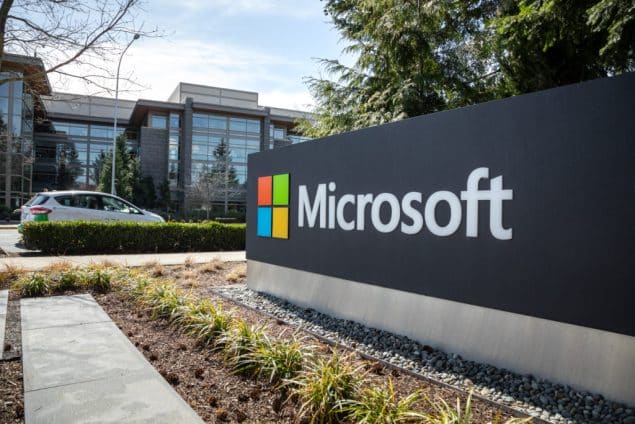Home » Employment News » Microsoft says its return to office plan may not happen in 2022
Microsoft says its return to office plan may not happen in 2022
https://www.whatjobs.com/news/employment-news/microsoft-says-its-return-to-office-plan-may-not-happen-in-2022

By Nagasunder in Employment News, posted June 24, 2022

Microsoft has revealed its back to the office plan is slowly working, but unlikely to be complete this year.
Bill Gates' tech giant says the number of staff returning is increasing since the plan was revealed in April.
Staff have been mandated to return to the office for at least 50 percent of the time, unless they have permission from their boss.
READ MORE: MICROSOFT TO INCLUDE PAY RANGES IN ALL U.S. JOB POSTINGS
Jared Spataro, Microsoft's corporate vice president of modern work, explained: "We can watch things like badging data, and it continues to go up for us,". The company had roughly 57,000 employees in Redmond, Bellevue and Seattle in 2021.
Microsoft would not reveal how close it is to meeting its back-to-office targets, other than to caution that it is unlikely to happen soon.
Spataro believes it will be six to nine months — early 2023 — before Microsoft has an idea of what a post-pandemic workplace looks like.
He also said many other office-based firms would suffer a similar wait, despite some expectations of an autumn back-to-work rush.
Spataro said one factor could be employees who have children will need to get through several months of the 2022-23 school year before they can settle into "a predictable rhythm of work patterns."
He added: “I don't think summer will give us a good view."
As important, even employers convinced that productivity has suffered under remote work may need more time selling that rationale to workers who think the pandemic proved otherwise.
READ MORE: FROM UBER TO MICROSOFT – THESE ARE THE NEXT BIG COMPANIES WHICH COULD STRUGGLE IN 5-10 YEARS
Workers "are not the same people they were two and a half years ago," Spataro said. "They don't buy the argument that they can't have any flexibility."
Microsoft's extreme caution accords with the company's well-known fixation on measuring everything.
However, it also reflects the slower-than-expected speed of the larger back-to-work trend, with workplace occupancy remaining below 45 percent for months, according to one widely followed tracking website.
By a recent poll by a commercial real estate business, office workers anticipate spending an average of 2.7 days each week in the workplace.
Importantly, Microsoft's cautious approach aligns with the company's concerns about losing highly talented employees to more flexible competitors or not being able to attract enough new workers to keep up with its rising sales — in, among other things, remote-work technology.
Looking for a new job? Find the WhatJobs Career Advice Center here
In May, Microsoft said it was boosting salaries and stock compensation as part of retention efforts.
But the impacts of Microsoft's go-slow back-to-office strategy go well beyond its own offices.
Since the start of the pandemic, many other employers have taken their cues from Microsoft's cautious approach to the office and likely will be watching closely as the company stages its long-awaited return.
Selling the office is clearly key to Microsoft's hybrid work strategy.
The company has been fast to provide its staff with a wealth of research material on the complex effects of remote work.
This includes a large study published last autumn in the journal Nature Human Behavior by Microsoft researchers, which suggests that remote work's negative impacts on cooperation and communication might "affect productivity and, in the long run, innovation."
Source: The Daily News
Follow us on YouTube, Twitter, LinkedIn, and Facebook














